Publications
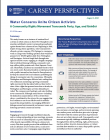
August 2, 2016
This study focuses on an instance of sustained local activism in which citizens in three New Hampshire communities mobilized to protect community groundwater against threats from commercial use. Beginning in 2001, despite strong citizen opposition, state-issued permits allowed a private company, USA Springs, to commence work on a large water-bottling operation that would have pumped over 400,000…
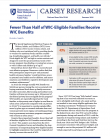
July 20, 2016
The Special Supplemental Nutrition Program for Women, Infants, and Children (WIC) serves millions of low-income women, infants, and children who are at nutritional risk by providing checks or vouchers for nutritious foods, nutrition counseling, breastfeeding support, and health care referrals.1 Foods eligible for WIC are high in certain nutrients and designed to meet the special nutritional needs…
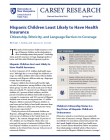
June 15, 2016
This policy brief examines health insurance coverage of Hispanic children and its relationship to their citizenship status, their parents’1 citizenship status, parents’ insurance coverage, language spoken at home, and their state’s Medicaid expansion policies.
Hispanic Children Are Least Likely to Have Health Insurance
In 2014, 94 percent of U.S. children had health insurance.2 Although this…
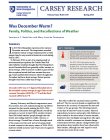
June 9, 2016
In 2015 New Hampshire experienced its warmest December on record. The temperature exceeded twentieth century average temperatures by a wider margin than for any month in historical records dating back to 1895.
In February 2016, as part of an ongoing study of environmental perceptions, the Granite State Poll asked whether residents thought that New Hampshire’s recent December had been generally…
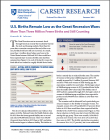
June 7, 2016
The Great Recession sent an economic shock through American society that reached far beyond the stock and housing markets. More than five years after economists announced the end of the recession, fertility levels have still not recovered. As a result, more than 3.4 million fewer babies were born in the United States between 2008 and 2015 than would have been expected if pre-recession fertility…
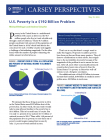
May 26, 2016
Poverty in the United States is a multifaceted problem with causes as diverse as the 46.7 million people who live in it and solvable only through a suite of solutions.1 Those 46.7 million people constituted 14.8 percent of the population of the United States in 2014,2 which both shocks the conscience for such a wealthy country and suggests a challenge of intimidating magnitude. On the other hand…
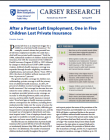
May 24, 2016
Parental job loss is an important trigger for a child’s loss of private health insurance.1 For example, research shows that parental loss of full-time employment doubles the odds that a child will lose private health insurance.2 Until the 1990s, substantial numbers of children lacked health insurance, but with the enactment of the Children’s Health Insurance Program (CHIP) in 1997, followed by…
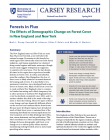
May 10, 2016
The New England states and New York are more than 50 percent forested, a rate well above the national average. Economies in this heavily forested region have historically relied on forest-based industries, and human population has clustered along coastal regions and major waterways, though recent trends suggest widespread in-migration to amenity-rich rural areas. Over the last decade, all states…
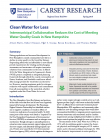
April 26, 2016
Rising populations and increased development in New Hampshire coastal communities have led to a decline in water quality in the Great Bay Estuary. Responding effectively and affordably to new federal permit requirements for treating and discharging stormwater and wastewater will require innovative solutions from communities in the area. In March 2015, the Water Integration for Squamscott–Exeter…
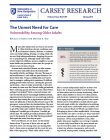
April 12, 2016
Many older adults need care but do not receive it. Often frail from chronic conditions such as Alzheimer’s disease, diabetes, or arthritis, some need help bathing, dressing, or eating, while others need help taking medications, shopping for groceries, or preparing food. Although many older adults receive help from children, spouses, neighbors, or paid home health care providers, others have few…
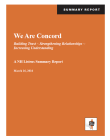
March 16, 2016
In February 2016, over 250 people attended one of three We Are Concord conversations to share their concerns and priorities for promoting collaboration and healthy problem solving across differences. These conversations provided an opportunity for the Concord community to strengthen relationships in a changing economy and a changing community, build trust and positive places for learning and…
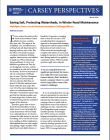
March 15, 2016
Every winter, the surface of the earth in the northern United States becomes considerably more salty. The reason is, for availability, cost, and effectiveness, nothing beats salt-based deicers for keeping roadways clear of ice. But the effects of road salt on aquatic ecosystems, freshwater drinking supplies, infrastructure, and vehicles is significant. When chlorides get into groundwater, it can…
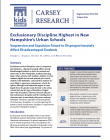
March 1, 2016
Exclusionary school discipline—that is, suspension and expulsion—disproportionately affects already disadvantaged students on both the national and state levels. In New Hampshire, students attending larger urban schools, male students, students of color, students eligible for free and reduced-price lunch, students with disabilities, and homeless students are more likely to experience exclusionary…
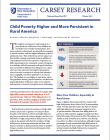
February 23, 2016
The negative consequences of growing up in a poor family are well known. Poor children are less likely to have timely immunizations, have lower academic achievement, are generally less engaged in school activities, and face higher delinquency rates in adolescent years.1 Each of these has adverse impacts on their health, earnings, and family status in adulthood. Less understood is how the…
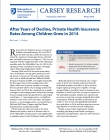
February 16, 2016
Rates of private health insurance coverage for children increased between 2013 and 2014 for the first time since 2008, the first year in which the American Community Survey collected data on health insurance (see Figure 1). The rise corresponds with the implementation of the individual mandate under the Affordable Care Act (ACA), the opening of state and federal insurance exchanges, and an…
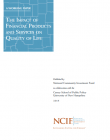
February 3, 2016
http://ncif.org/sites/default/files/free-publications/The%20Impact%20of%20Fin%20Products%20and%20Services%20on%20QOL%20-%20Secured.pdf
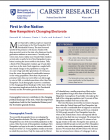
January 26, 2016
More than half a million people are expected to participate in the New Hampshire 2016 Presidential Primary. The time-honored symbol of the primary is the laconic Yankee with deep ancestral roots in the state, who dismisses fourth-generation residents as newcomers. Certainly such voters exist, but in reality most Granite State residents arrived only recently. In fact, New Hampshire’s population is…
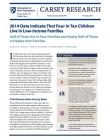
December 16, 2015
In September 2015, the Census Bureau released 2014 poverty data from the American Community Survey (ACS), the only regular source for reliably estimating child poverty in geographic areas below the state level using the official poverty measure. In this brief, we use ACS data to explore child poverty rates across the United States by region, state, and place type (rural, suburban, and city). We…
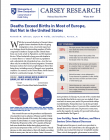
December 15, 2015
With the increased attention to Europe’s demographic future stimulated by the on-going immigration crisis, we present important new findings about the diminishing number of births compared to deaths in Europe and the United States from our recent article in Population and Development Review. When births fail to keep pace with deaths in a country there is a “natural” decrease in population and a…
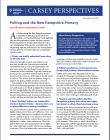
December 14, 2015
As of this writing, the New Hampshire primary is scheduled to take place in just about two months—on Tuesday, February 9, just eight days after the first nomination contest, the Iowa caucuses. Numerous polls have already told us what the voters are contemplating “if the election were held today.” In interpreting what the polls mean for the actual primary election, however, we need to take into…
